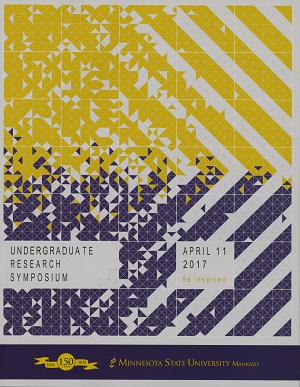Counteraction of APOBEC3A by SIV Sooty Mangabey Proteins
Location
CSU Ballroom
Start Date
11-4-2017 10:00 AM
End Date
11-4-2017 11:30 AM
Student's Major
Biological Sciences
Student's College
Science, Engineering and Technology
Mentor's Name
Allison Land
Mentor's Department
Biological Sciences
Mentor's College
Science, Engineering and Technology
Description
The APOBEC3 protein family is best known for its lentiviral restriction capabilities. These proteins counteract lentiviruses such as HIV by causing lethal mutagenesis. In order for these lentiviruses to survive, they need a protein to counteract the APOBEC3s. A series of proteins known as VPX and VPR are encoded by the related lentivirus SIVsmm, which infects sooty mangabeys. These proteins have recently been shown to possibly degrade APOBEC3A. Understanding a mechanism that neutralizes APOBEC3A is important because APOBEC3A and APOBEC3B have recently been implicated in oncogenesis, with one report even suggesting that APOBEC3 mutagenesis is second only to aging in terms of contribution to cancer mutagenesis. I hypothesize that with increasing levels of VPR and VPX we will see dwindling levels of APOBEC3A due to degradation mediated by the SIV proteins. To test our hypothesis VPR/VPX will be individually transfected into 293T cells, and after 48 hours, the cells will be lysed and A3A will be detected by immunoblot to assess VPR/VPX mediated degradation. If these proteins are unable to mediate degradation of APOBEC3A, we will expand our survey to other SIV strains. We are confident that we will identify a protein that is effectively able to neutralize APOBEC3A, and furthermore provide knowledge that may lead to more effective treatments for cancer patients by counteracting mutagenesis and tumor evolution.
Counteraction of APOBEC3A by SIV Sooty Mangabey Proteins
CSU Ballroom
The APOBEC3 protein family is best known for its lentiviral restriction capabilities. These proteins counteract lentiviruses such as HIV by causing lethal mutagenesis. In order for these lentiviruses to survive, they need a protein to counteract the APOBEC3s. A series of proteins known as VPX and VPR are encoded by the related lentivirus SIVsmm, which infects sooty mangabeys. These proteins have recently been shown to possibly degrade APOBEC3A. Understanding a mechanism that neutralizes APOBEC3A is important because APOBEC3A and APOBEC3B have recently been implicated in oncogenesis, with one report even suggesting that APOBEC3 mutagenesis is second only to aging in terms of contribution to cancer mutagenesis. I hypothesize that with increasing levels of VPR and VPX we will see dwindling levels of APOBEC3A due to degradation mediated by the SIV proteins. To test our hypothesis VPR/VPX will be individually transfected into 293T cells, and after 48 hours, the cells will be lysed and A3A will be detected by immunoblot to assess VPR/VPX mediated degradation. If these proteins are unable to mediate degradation of APOBEC3A, we will expand our survey to other SIV strains. We are confident that we will identify a protein that is effectively able to neutralize APOBEC3A, and furthermore provide knowledge that may lead to more effective treatments for cancer patients by counteracting mutagenesis and tumor evolution.
Recommended Citation
Leba, Ryan. "Counteraction of APOBEC3A by SIV Sooty Mangabey Proteins." Undergraduate Research Symposium, Mankato, MN, April 11, 2017.
https://cornerstone.lib.mnsu.edu/urs/2017/poster-session-A/16



